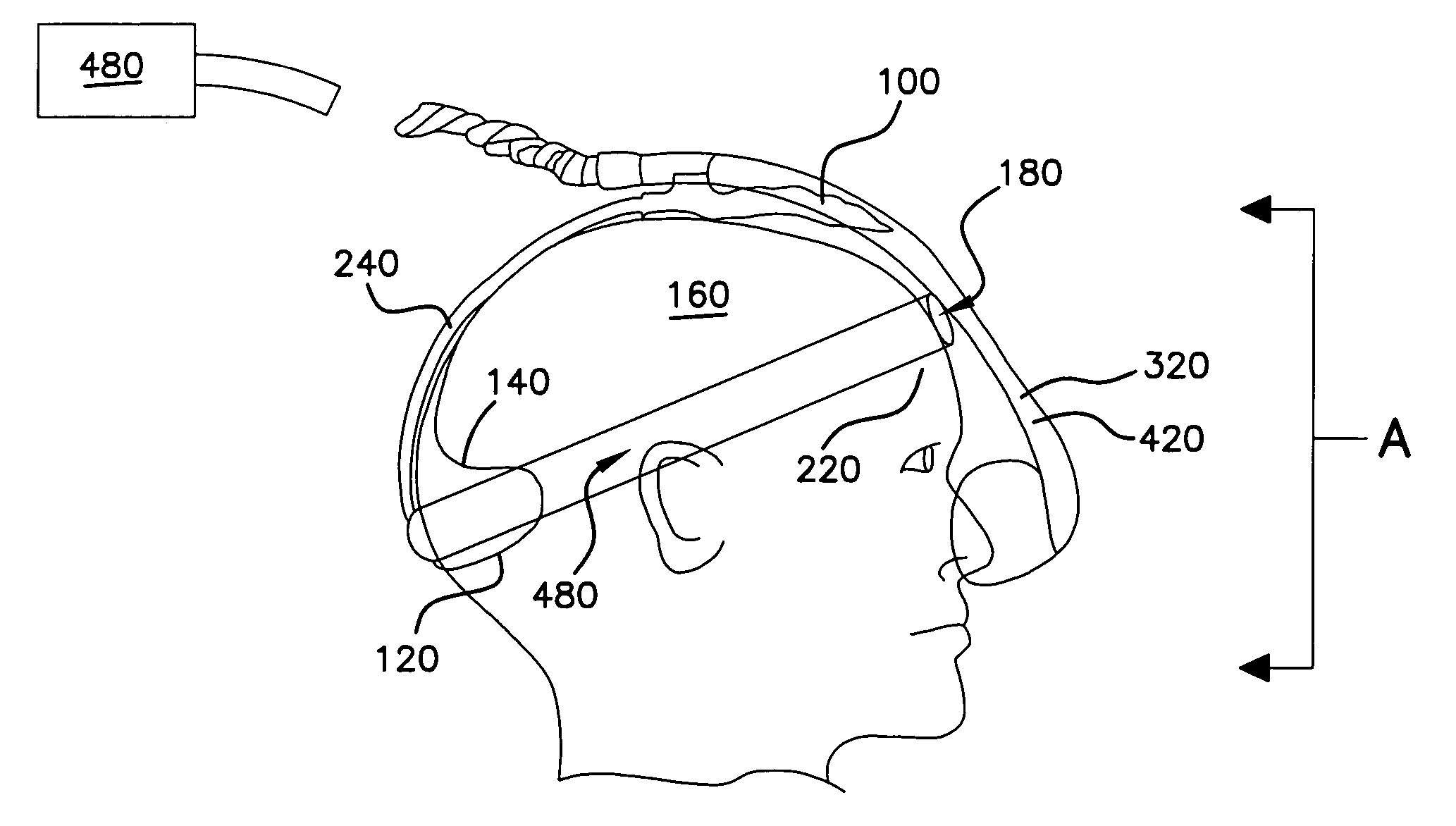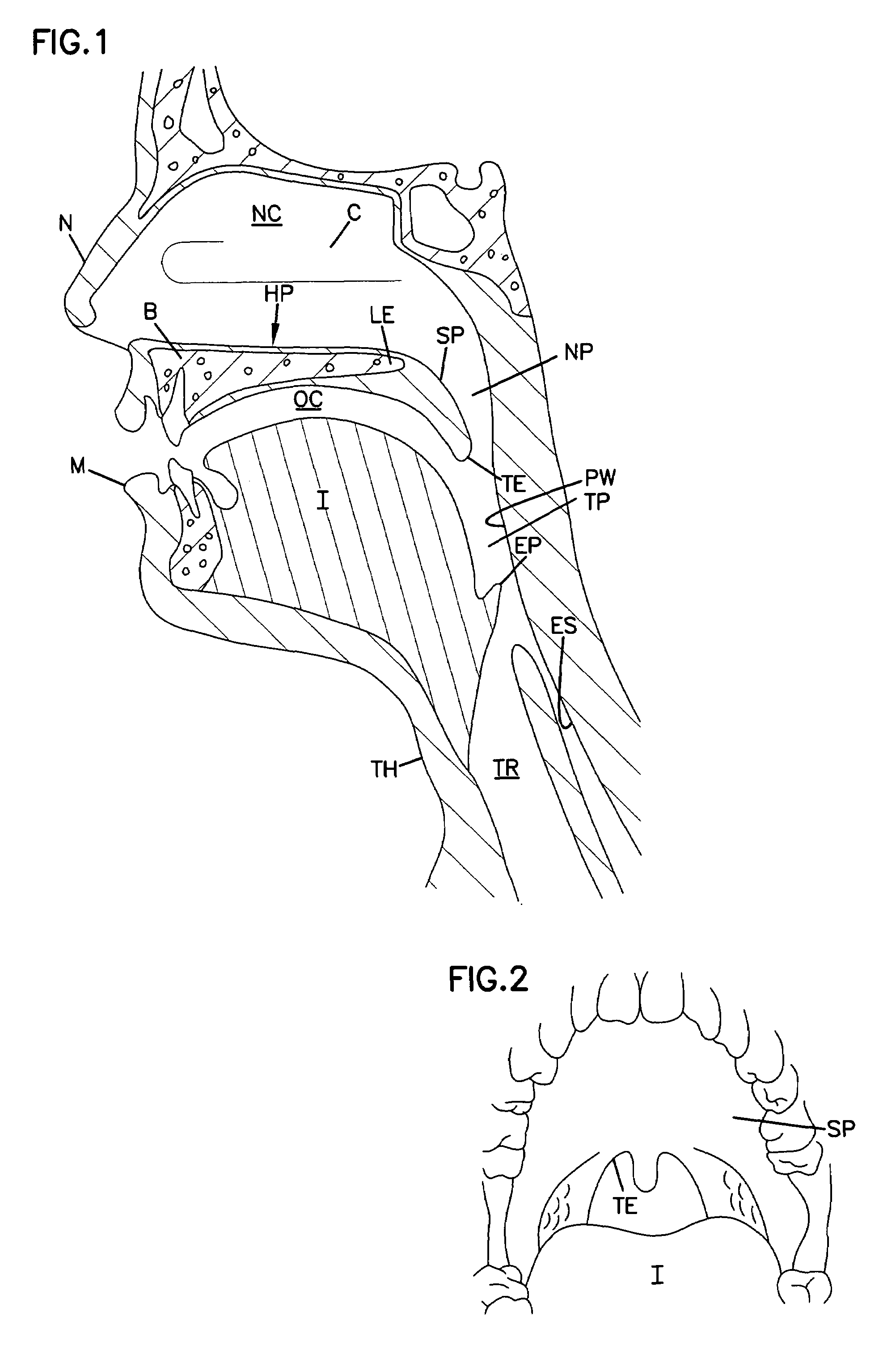Combination sleep apnea treatment
a combination and sleep apnea technology, applied in the field of obstructive sleep apnea treatment, can solve the problems of increased blood pressure, adverse cardiac effects, and increased achieve the effects of reducing the risk of osa patients, and reducing the risk of osa
- Summary
- Abstract
- Description
- Claims
- Application Information
AI Technical Summary
Benefits of technology
Problems solved by technology
Method used
Image
Examples
Embodiment Construction
[0053]With reference now to the various drawing Figures, in which identical elements are numbered identically throughout, a detailed description of a preferred embodiment of the present invention will now be provided. The teachings of the following U.S. patents are incorporated herein by reference: U.S. Pat. No. 6,250,307 to Conrad et al. dated Jun. 26, 2001; U.S. Pat. No. 6,578,580 to Conrad et al. dated Jun. 17, 2003; U.S. Pat. No. 6,523,542 to Metzger et al. dated Feb. 25, 2003; U.S. Pat. No. 6,513,530 to Knudson et al. dated Feb. 4, 2003; and U.S. Pat. No. 6,431,174 to Knudson et al. dated Aug. 13, 2002.
[0054]A. Physiology Background
[0055]FIG. 1 shows, in cross-section, a naso-pharyngeal area of an untreated patient. FIG. 2 shows a soft palate SP viewed through an open mouth of the untreated patient. FIG. 1 shows the nose N, mouth M and throat TH. The tongue T is shown in an oral cavity OC of the mouth. A hard palate HP (containing a bone B) separates the oral cavity OC from the...
PUM
 Login to View More
Login to View More Abstract
Description
Claims
Application Information
 Login to View More
Login to View More - R&D
- Intellectual Property
- Life Sciences
- Materials
- Tech Scout
- Unparalleled Data Quality
- Higher Quality Content
- 60% Fewer Hallucinations
Browse by: Latest US Patents, China's latest patents, Technical Efficacy Thesaurus, Application Domain, Technology Topic, Popular Technical Reports.
© 2025 PatSnap. All rights reserved.Legal|Privacy policy|Modern Slavery Act Transparency Statement|Sitemap|About US| Contact US: help@patsnap.com



